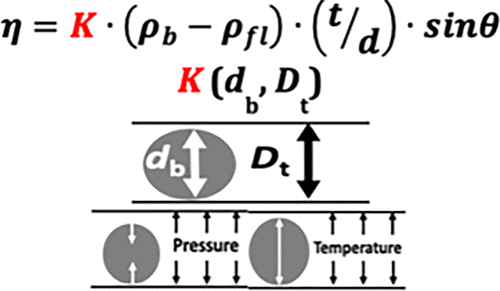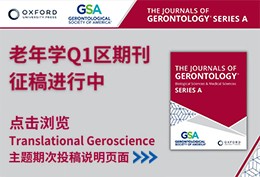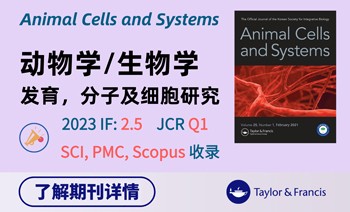当前位置:
X-MOL 学术
›
Ind. Eng. Chem. Res.
›
论文详情
Our official English website, www.x-mol.net, welcomes your
feedback! (Note: you will need to create a separate account there.)
High-Temperature, High-Pressure Viscosities and Densities of n-Hexadecane, 2,2,4,4,6,8,8-Heptamethylnonane, and Squalane Measured Using a Universal Calibration for a Rolling-Ball Viscometer/Densimeter
Industrial & Engineering Chemistry Research ( IF 3.8 ) Pub Date : 2019-02-27 , DOI: 10.1021/acs.iecr.8b05952
Aaron J. Rowane 1, 2 , Rajendar R. Mallepally 3 , Ashutosh Gupta 4 , Manolis Gavaises 1 , Mark A. MHugh 3
Industrial & Engineering Chemistry Research ( IF 3.8 ) Pub Date : 2019-02-27 , DOI: 10.1021/acs.iecr.8b05952
Aaron J. Rowane 1, 2 , Rajendar R. Mallepally 3 , Ashutosh Gupta 4 , Manolis Gavaises 1 , Mark A. MHugh 3
Affiliation

|
The development of reference correlations for viscous fluids is predicated on the availability of accurate viscosity data, especially at high pressure, high temperature (HPHT) conditions. The rolling ball viscometer (RBV) is a facile technique for obtaining such HPHT viscosity data. A new, universal RBV calibration methodology is described and applied over a broad T–p region and for a wide range of viscosities. The new calibration equation is used to obtain viscosities for n-hexadecane (HXD), 2,2,4,4,6,8,8-heptamethylnonane (HMN), and 2,6,10,15,19,23-hexamethyltetracosane (squalane) from 298–530 K and pressures to 250 MPa. The available literature database for HMN is expanded to 520 K and 175 MPa and for squalane to 525 K and 250 MPa. The combined expanded uncertainties are 0.6% and 2.5% for the densities and viscosities, respectively, each with a coverage factor, k = 2. The reliability of the viscosity data is validated by comparison of HXD and squalane viscosities to accepted reference correlations and HMN viscosities to available literature data. The necessity of this new calibration approach is confirmed by the large deviations observed between HXD, HMN, and squalane viscosities determined using the new, universal RBV calibration equation and viscosities determined using a quadratic polynomial calibration equation. HXD, HMN, and squalane densities are predicted with the Perturbed Chain Statistical Associating Fluid Theory using pure component parameters calculated with a previously reported group contribution (GC) method. HXD, HMN, and squalane viscosities are compared to Free Volume Theory (FVT) predictions using FVT parameters calculated from a literature correlation for n-alkanes. Although the FVT predictions for HXD, a normal alkane, result in an average absolute percent deviation (ΔAAD) of 3.8%, predictions for HMN and squalane, two branched alkanes, are 4 to 13 times larger. The fit of the FVT model for the branched alkanes is dramatically improved if the FVT parameters are allowed to vary with temperature.
中文翻译:

正十六烷,2,2,4,4,6,8,8-庚甲基壬烷和角鲨烷的高温高压黏度和密度,使用滚涂粘度计/密度计的通用标定进行测量
粘性流体参考相关性的发展取决于准确的粘度数据的可用性,尤其是在高压,高温(HPHT)条件下。滚球粘度计(RBV)是用于获得此类HPHT粘度数据的简便技术。描述了一种新的通用RBV校准方法,并将其应用于宽T – p区域和宽范围的粘度。新的校准方程式用于获得n的粘度-十六烷(HXD),2,2,4,4,6,8,8-七甲基壬烷(HMN)和2,6,10,15,19,23-六甲基四氢烷(角鲨烷)的温度为298–530 K,压力为250兆帕。HMN的可用文献数据库扩展到520 K和175 MPa,角鲨烷扩展到525 K和250 MPa。密度和粘度的组合扩展不确定度分别为0.6%和2.5%,每一个具有覆盖率k=2。通过将HXD和角鲨烷粘度与公认的参考相关性进行比较,以及将HMN粘度与现有文献数据进行比较,可以验证粘度数据的可靠性。通过使用新的通用RBV校准方程确定的HXD,HMN和角鲨烷粘度之间的偏差以及使用二次多项式校准方程确定的粘度,可以确认这种新校准方法的必要性。HXD,HMN和角鲨烷的密度是通过扰动链统计缔合流体理论,使用以前报告的基团贡献(GC)方法计算出的纯组分参数来预测的。HXD,HMN,和角鲨烷的粘度进行比较,以自由体积理论(FVT)使用来自一个文献相关计算FVT参数预测Ñ-烷烃。尽管对正构烷烃HXD的FVT预测导致平均绝对百分比偏差(ΔAAD)为3.8%,但对HMN和角鲨烷(两个支链烷烃)的预测却大了4到13倍。如果允许FVT参数随温度变化,则FVT模型对支链烷烃的拟合度将显着提高。
更新日期:2019-02-27
中文翻译:

正十六烷,2,2,4,4,6,8,8-庚甲基壬烷和角鲨烷的高温高压黏度和密度,使用滚涂粘度计/密度计的通用标定进行测量
粘性流体参考相关性的发展取决于准确的粘度数据的可用性,尤其是在高压,高温(HPHT)条件下。滚球粘度计(RBV)是用于获得此类HPHT粘度数据的简便技术。描述了一种新的通用RBV校准方法,并将其应用于宽T – p区域和宽范围的粘度。新的校准方程式用于获得n的粘度-十六烷(HXD),2,2,4,4,6,8,8-七甲基壬烷(HMN)和2,6,10,15,19,23-六甲基四氢烷(角鲨烷)的温度为298–530 K,压力为250兆帕。HMN的可用文献数据库扩展到520 K和175 MPa,角鲨烷扩展到525 K和250 MPa。密度和粘度的组合扩展不确定度分别为0.6%和2.5%,每一个具有覆盖率k=2。通过将HXD和角鲨烷粘度与公认的参考相关性进行比较,以及将HMN粘度与现有文献数据进行比较,可以验证粘度数据的可靠性。通过使用新的通用RBV校准方程确定的HXD,HMN和角鲨烷粘度之间的偏差以及使用二次多项式校准方程确定的粘度,可以确认这种新校准方法的必要性。HXD,HMN和角鲨烷的密度是通过扰动链统计缔合流体理论,使用以前报告的基团贡献(GC)方法计算出的纯组分参数来预测的。HXD,HMN,和角鲨烷的粘度进行比较,以自由体积理论(FVT)使用来自一个文献相关计算FVT参数预测Ñ-烷烃。尽管对正构烷烃HXD的FVT预测导致平均绝对百分比偏差(ΔAAD)为3.8%,但对HMN和角鲨烷(两个支链烷烃)的预测却大了4到13倍。如果允许FVT参数随温度变化,则FVT模型对支链烷烃的拟合度将显着提高。

































 京公网安备 11010802027423号
京公网安备 11010802027423号